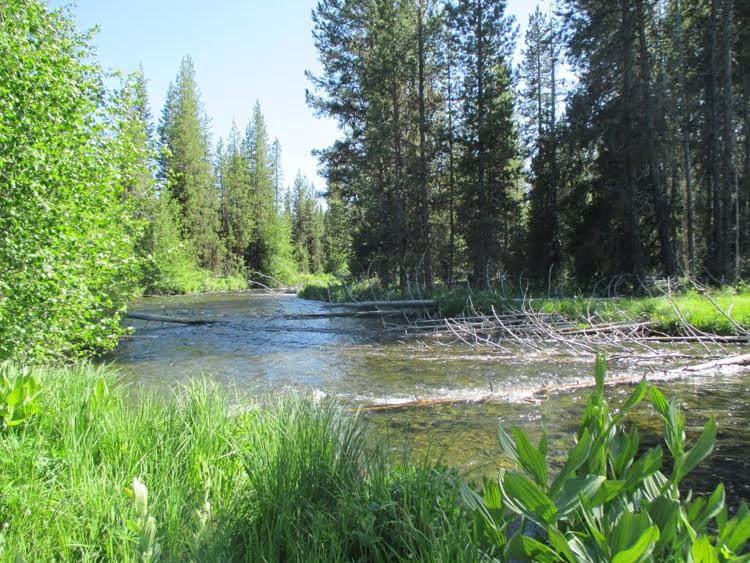Bend Bulletin - Ballot offers voters an option to fund Deschutes County conservation projects

The Nov. 5 ballot includes a measure that if passed, would provide a jolt of new funding for the Deschutes Soil and Water Conservation District.
The district was established in 1947 to enhance natural resources within Deschutes County. It helps fund and facilitate projects that conserve water and protect soil resources.
Based on an assessment of natural resource needs in the county, the district placed a measure on the ballot that would create a permanent tax rate. If approved, the maximum the district could levy is 6 cents per $1,000 of assessed property value and this rate could not be raised.
Oregon has 42 soil and water districts, and 14 of them have permanent tax levies.
If passed, an area residence assessed at $238,000 would be expected to pay $1.19 per month, or about $14 per year. The tax is expected to raise $2.1 million per year.
The assessed value of property in Deschutes County is typically much lower than the market value and can be found on dial.deschutes.org.
Current funding
The amount of funding would be significant for an organization that typically relies on small state grants. Funding is currently from the Oregon Department of Agriculture, the Natural Resources Conservation Service, and the Oregon Watershed Enhancement Board, among others.
The district’s current budget for 2024-2025 is $845,000 said Erin Kilcullen, manager for Deschutes Soil and Water Conservation District. Kilcullen said the annual budget usually ranges between $500,000 and $1 million.
The levy is designed to be a funding source available to help with conservation projects in both rural and urban areas. The district promotes voluntary efforts to conserve water, protect drinking water supplies and improve soil health for local farms and agriculture.
Examples of projects include boosting on-farm irrigation efficiency, piping of shared private lateral canals and flood irrigation-to-sprinkler conversions. In cities and towns, projects are designed to support community gardens and convert landscapes to drought-resistant and native pollinator landscapes.
Increased funding needs
Deschutes Soil and Water Conservation District board member Jeff Rola says the need for additional funding has never been greater and the list of projects the district wants to tackle is too much for its funding capacity.
“Nobody likes to ask for money from the taxpayers, and I respect that,” said Rola. “But we see a condition that is existing in our environment right now that is overtaking us and is going to affect everybody. It’s going to affect property values; it’s going to affect insurance rates; it’s going to affect our ability to grow food.”
Rola said growth, climate change and drought have increased the need for a greater focus on water conservation and soil protection.
“Water is declining in the basin… it manifests in wells drying up, with irrigation districts cutting back on their ability to serve their customers and it has been going on for decades. Conservation can play a huge role in making water more abundant and secure,” he said.
Rola said the measure will also impact Bend residents.
“The average voter in Bend is our biggest supporter. They want clean air and water; they want abundant food; they want the ability to float the river and have fish in the river so they can recreate and use those water sources as they have been for many years,” he said.
Opposition voice
But not all board members back the measure. Robin Vora, a board member at large, is turning his back on the measure to protest a district rule that requires five of the seven board members to manage or own 10 acres of land in the district they represent.
Vora says only 1% to 2% of county residents would qualify to run for the board seats that have the landholding requirement. Two of the seats are “at large” and do not have a requirement to live within the district on 10 acres.
“The concern is that you would be paying the tax, but you wouldn’t have as much say in how that money is spent because you can only run for two of the seven positions. So it’s unequal representation in that way,” said Vora.
Vora’s main concern with the measure is that most of the people who would be footing the bill would not be eligible to run for a board seat and determine how the raised money is spent.
When the county’s population reaches 250,000 residents, expected to occur within the next 10 years, the 10-acre requirement ends.
“People should know that most people cannot run for a seat,” said Vora. “There are very few people who have 10 acres and are interested in running, and have the time.”
Rola, who represents Zone 3 of the district, agrees the 10-acre rule should change. But he does not believe the measure should be torpedoed to make a statement against the way people qualify to run for a board seat.
“It’s an arcane rule, and we disagree with that rule entirely, but that is state law,” said Rola. “Robin’s concerns are valid… but from my perspective, that law will change faster if we have a tax base and show people what we can do and have more leverage with our funders so that we can get that restriction lifted. It’s coming.”

